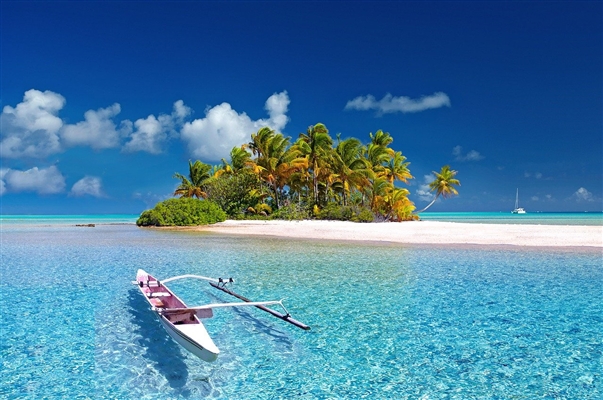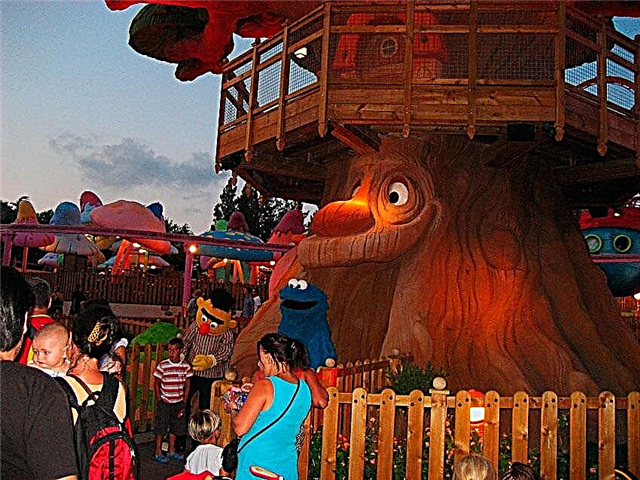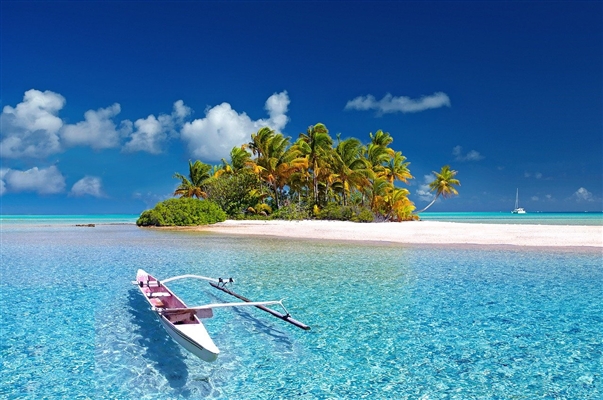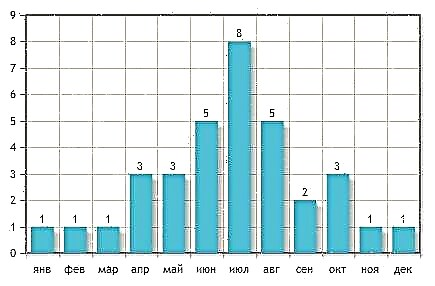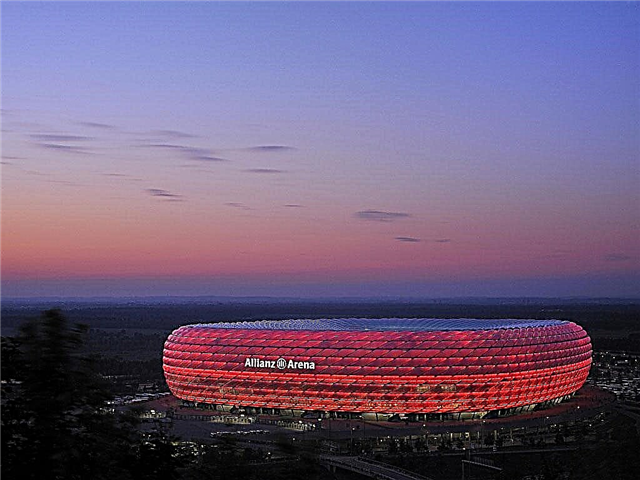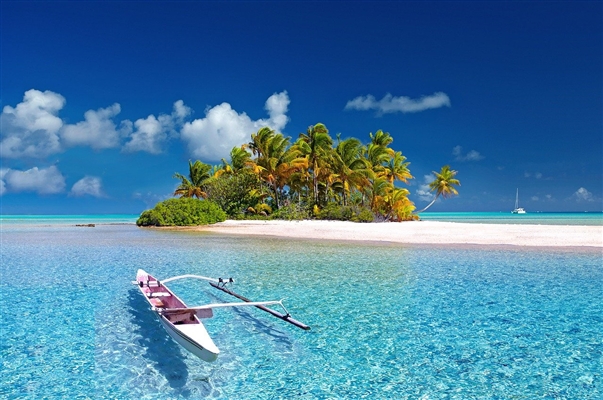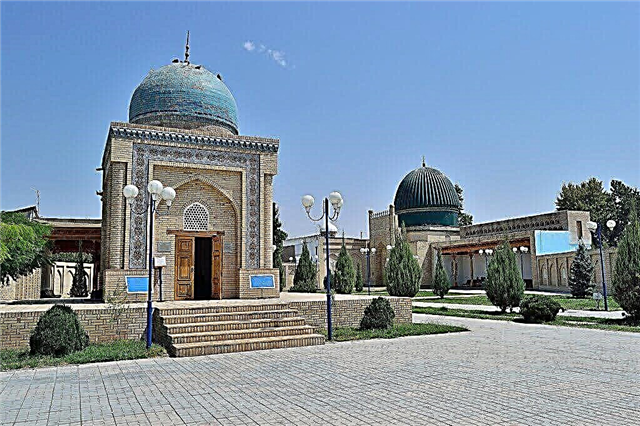The largest city in terms of population in Uzbekistan is the capital of the country, Tashkent. The number of its inhabitants is more than 5 times higher than the number of inhabitants of cities included in the five largest cities in the country. More than half a million residents live in Samarkand, which was the capital of the Uzbek USSR, and in the city of Namangan. The urban population makes up half of the country's inhabitants. At the same time, the growth rate of the urban population is currently low.
Tourists traveling to the cities of Uzbekistan are attracted by their rich history, shrines and ancient citadels. The Great Silk Road ran through many cities, which influenced their culture and architecture. Travelers are especially interested in religious buildings - minarets, mosques and madrasahs. The peculiarities of their construction are combined with the national architectural style.
The largest cities of Uzbekistan
List of the largest cities in terms of population in the country.
Tashkent
The largest city in Uzbekistan and one of the most ancient on its territory. The first mention of the city dates back to the 2nd century. The old stone buildings were almost completely destroyed in the 1966 earthquake. Among the architectural sights, the Khazrati Imam religious ensemble of the 16th century stands out. Ethnographic and archaeological collections are presented in state museums.
Population - 2,522,800 people (2019).

Namangan
People began to live in this place as early as the 1st century BC. The modern city was founded in the 17th century. An interesting mausoleum of Khojamny-Kabra with a bizarre facing. Famous landmarks are the mosques of Mulla Bozor Okhund and Atavalikhon, as well as the Mulla-Kirgiz madrasah. Namangan Park is located in the center of the city - a good place for walking, its territory occupies 14 hectares.
Population - 597 400 people (2017).
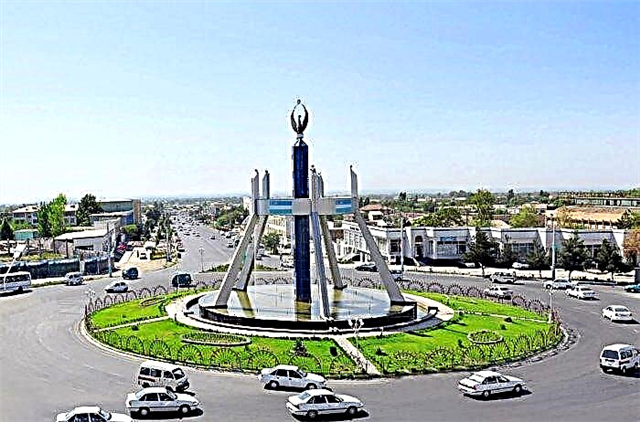
Samarkand
The national spirit has been preserved in this ancient city. Ancient architectural buildings, spiritual values, cultural objects are of interest to tourists from all over the world. Among the majestic and holy places are the Registan square with many architectural monuments, the Shakhi-Zinda mausoleum, the Bibi-Khanum mosque with rich decoration, the mausoleum of St. Daniel, near which there is a healing spring.
Population - 540,000 people (2019).

Andijan
Located in the Fergana Valley among picturesque landscapes. Its age is over 2000 years. Tourists are interested in the grandiose Jami Mosque with 26 arched spans on the main facade. A few kilometers from the city there are holy places - the ancient settlement of Mingtepa and the Teshik-Tash rock. The local history museum of the city contains about 65,000 archaeological exhibits.
Population - 425,500 people (2017).

Fergana
One of the youngest cities in the country - founded in 1876. Most of the houses in the city look modest, without architectural delights. Some houses are decorated with national ornaments. Of the buildings of the 19th century, the building of the Military Assembly, the House of the Military Governor and the Cathedral of Alexander Nevsky are of interest. The city is interesting for its beautiful landscapes; it is considered the greenest city in the country.
Population - 380 800 people (2018).

Nukus
The city is surrounded by deserts - it has a hot climate with frequent sandstorms. Despite the difficult environmental conditions, human settlements in these places were still in ancient times. Now the city is an administrative center, in which the national flavor has been preserved - oriental bazaars, camel rides in the desert. The ancient necropolis of Mizdahkan is interesting in the vicinity of the city.
Population - 316 300 people (2019).
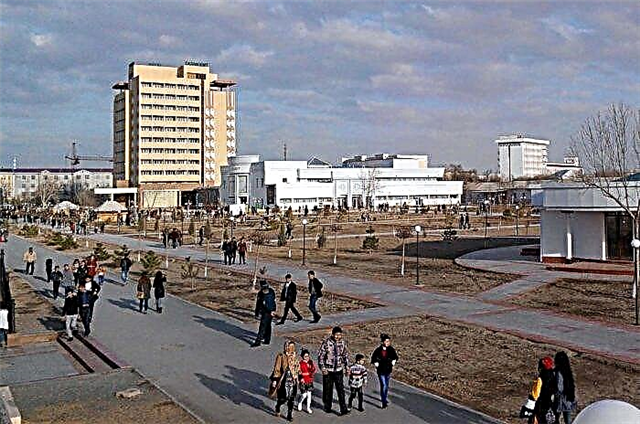
Bukhara
An ancient city that preserves centuries-old traditions. It houses a large number of Islamic religious buildings - mausoleums, mosques, tombs of saints. Thousands of tourists come here, they are attracted by the architectural skill of ancient architects. The symbol of the city is the Kalyan minaret, founded in the 12th century. The monumental ensemble Lyabi-Hauz is located in the center of the city.
Population - 272,500 people (2014).

Karshi
Located in an interesting natural area - in an oasis between mountains and steppe. There are several national reserves near the city. The age of the city is about 2700 years. Nowadays it is a modern city with monuments of ancient architecture. Many of them are the national treasure of Uzbekistan. Among the ancient ruins, the Yerkurgan settlement with centuries-old buildings stands out.
Population - 260,000 people (2019).

Kokand
The name of the city translates as "beautiful place". It is surrounded by cotton fields, vineyards, vegetable plantations. Among the ancient buildings, the palace of Khudoyar Khan and the Dakhma-i-Shakhan complex stand out for their luxury. The expositions of the Mukimi Museum are dedicated to the work of the great poet. The workshops sell handmade goods - ceramics, bowls, figurines, boxes and jewelry.
Population - 251 700 people (2019).

Navoi
The construction of the city began only in 1958. The name of the city was given in honor of the poet and statesman Alisher Navoi. In ancient times, on the site of this young city, there were settlements of ancient Sakas and Khorezmians. Traces of ancient tribes' habitation were found in large numbers in the Sarmysh gorge. The so-called "art gallery of petroglyphs" has about 4,000 copies.
Population - 220,000 (2019).

Margilan
Located in the Fergana Valley. Archaeological research proves that it has existed since the VIII century, and that agriculture in this area has been practiced since the IV-III centuries BC. In Soviet times, the textile industry was actively developing here. Silk produced in Margilan is highly valued. Tourists are interested in local large bazaars, where you can buy high-quality items at low prices.
Population - 215 400 people (2014).

Urgench
It is called “the most mysterious city” of Uzbekistan. In the ancient chronicles, the city has different names, and because of this, it is difficult to establish the exact date of its foundation. In the III-IV centuries, the Toprak Kala fortress was founded here. Several fragments of the walls have survived to this day. An interesting memorial complex Jalaliddin Manguberdi is visited by both locals and tourists.
Population - 190,000 people (2019).
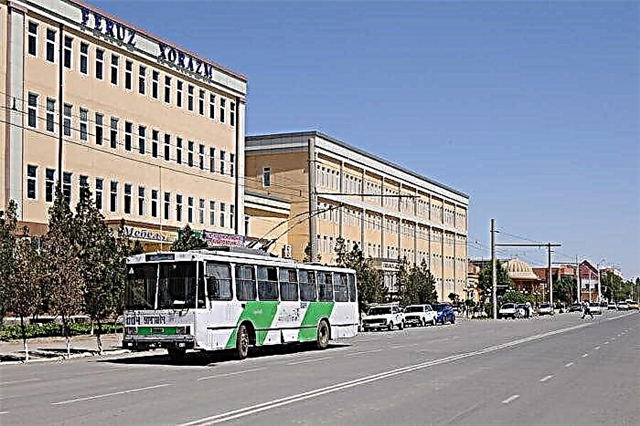
Angren
It is located in the valley of the Akhangaran river. The history of the city began with the founding of a workers' settlement of several small villages. It is currently the center of industry and industry. In the historical museum of the city, expositions telling about the history of the region are organized. The tourist program includes an inspection of the Gumbez-bobo mausoleum, this is a reconstruction of a building of the XI-XII century.
Population - 175 400 people (2014).

Chirchik
A city in the north of the country, which is located on the river of the same name. The river valley is located between two mountain ranges. Most of the houses in the city have a typical standard look. At the beginning of the 20th century, the city was developed during the construction of a hydroelectric power station and an electrochemical plant. At present, it houses light industry enterprises, and the machine-building industry is developing.
Population - 171,300 people (2015).

Jizzakh
It was founded as one of the transshipment points on the Great Silk Road in the X century. Located in a picturesque area between the Nurata mountains and the Sanzar River near the endless steppe. The landscapes of the region are incredibly varied. Steep canyons and rapid mountain rivers attract extreme tourists. The ruins of fortresses and ancient settlements attract many history-loving travelers.
Population - 163,200 people (2014).

Termez
Located on the banks of the Amu Darya River in the south of the country. The city is interesting for a variety of architectural styles and rich history. In 1390, the Hakim-at-Termezi mausoleum was erected - now it is a major religious center and a shrine for many pilgrims.A majestic structure is the Buddhist stupa Zurmala from the times of the Kushan kingdom.
Population - 140,000 people (2018).

Denau
The Kuzyl-Su river flows through the city. The city was built near the Gissar ridge and the Babatag mountains. Previously, there was a small village - the center of Bukhara Bekstvo. There are many historical and architectural sights in the city. The building of the Said Atalyk madrasah has been preserved since the 15th century. Of the interesting structures, the prayer house of the Intercession of the Mother of God stands out.
Population - 130,500 people (2017).

Chinaz
Located at the confluence of the Syrdarya and Chirchik rivers. A large highway leading to the capital of the country passes near the city. In the 6th century, a fortified settlement was erected here. The settlement area reached 40 hectares. The ruins of the ancient city have been preserved on the banks of the Chirchik River. The status of a modern city was obtained in 1972. The city is conventionally divided into two parts - "Russian" modern and "Uzbek" old, pre-revolutionary.
Population - 121 200 people (2012).

Almalyk
It is located at the Kuraminsky ridge on the Angrem River. The city was formed in 1272 by the merger of several small settlements in the center of the Chach oasis. A defensive wall was built as a defense against attacks. In the XIV century, a mint and palace were founded in the citadel. At the beginning of the 20th century, mineral deposits were discovered here, after which the small village began to actively grow.
Population - 121 100 people (2014).

Shakhrisabz
The combination of ancient national buildings and modern buildings gives a special flavor to the city. Each architectural monument is of great historical importance. The main attraction of the city is the Ak-Saray residence. The imposing building is distinguished by a 40-meter gate and filigree mosaic masonry. The Dorut-Tillyavat complex and the Dorus-Saodat ensemble are not inferior to it in beauty.
Population - 116,000 people (2018).

Khojeyli
The city is divided into eastern and western parts by the Suenli Canal. There are many green spaces, beautiful parks with flowering alleys. The city's name means "place of pilgrims". According to legend, the first man, Adam, is buried in the mausoleum of the Mizdakhan necropolis. Currently, the city is developing and improving. New light industry enterprises, factories and shopping centers are opening.
Population - 104 589 people (2009).

Bekabad
A city in the Fergana Valley on the banks of the Syrdarya River near the border with Tajikistan. Founded when the railway station was built in 1899. A large railway line connecting Khavast and Kokand passes through the city. Industry forms the basis of the city's economy. A cement plant has been operating since 1929. Farhad hydroelectric power station is located on the territory of the city.
Population - 101,292 people (2009).

Chartak
Located on the banks of the Chartaksay River. The Great Namangan Canal passes through the city. There is a balneological resort not far from the city. In the sanatorium, the waters treat diseases of the musculoskeletal system, gynecological diseases, as well as diseases of the nervous system. The products of the mineral water plant in Chartak are distinguished by special medicinal properties.
Population - 95 800 people (2010).

Khiva
The historic center of the city of Ichan-Khala is included in the list of UNESCO sites. The beginning of the construction of the ancient complex dates back to the 16th century. This medieval citadel has survived to this day in very good condition. The style of ancient architecture creates the appearance of the entire city. Other historical monuments of the city are the Juma mosque of the 10th century, the Islam-Khoja minaret, the Tash-Khauli palace.
Population - 89,500 people (2017).

Kungrad
Located in the northwestern part of the country on the banks of the Amu Darya River near the Ustyurt plateau. The unique flora and fauna of this place is under threat due to the drying up of the Aral Sea. The city has an ancient history. Its name comes from one of the ancient Turkic families. Archaeological sites of Kungrad date back to the Neolithic era. For centuries, the city has been the capital of various states.
Population - 80,090 people (2018).



